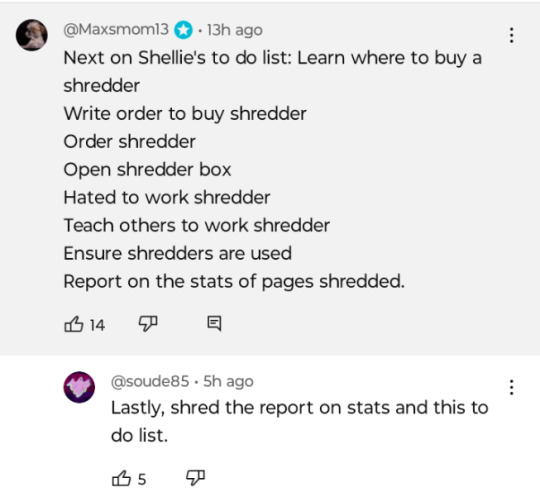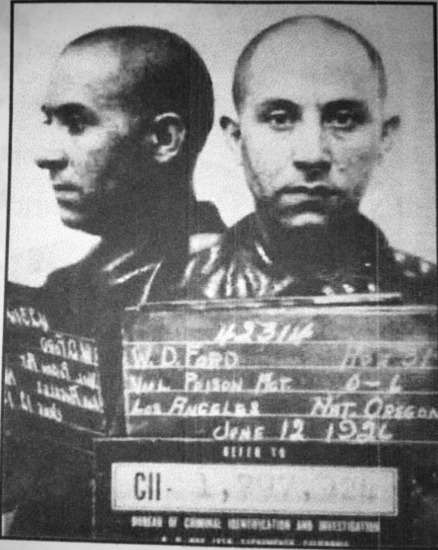#Sephardic Jews
Explore tagged Tumblr posts
Text

A Sephardic Torah manuscript with golden Stars of David, Soria/Tudela 1300–1312. ✡
Paris, Bibliothèque nationale de France, MS Hébreu 21, fol. 98v, Soria/Tudela 1300–1312.
From: Clockwise–Counterclockwise: Calligraphic Frames in Sephardic Hebrew Bibles and Their Roots in Mediterranean Culture by Dalia-Ruth Halperin. x
#judaism#jewish manuscripts#tanakh#torah#antique jewish manuscripts#Jewish art#magen david#star of david#medieval jewish art#antique jewish art#sephardic jews#sephardic art#sefarad
177 notes
·
View notes
Text
Jumblr, it'd be awesome if you could help out a small and/or new Jewish community and band. Plus, you only have to listen to an Instagram reel to do it.
One of the new Jewish organizations near me helped to put out a song for Hanukkah this year, a rock version of the Ladino song "Ocho Kandelikas". I marked Yom Kippur and Kabbalat Shabbat with the guy who did some of the singing/guitar/music direction. He is a Cool Dude who deserves the support!
It would be really awesome if y'all gave it a listen and some positive interactions. It is here; I can't make the embed links work for reasons that are mysterious to my elderly self.
A lot of folks in the community speak English and Hebrew as well as Spanish, so you have options when it comes to what language to write your comment in.
#jumblr#judaism#ladino#sephardim#sephardic jews#music#jewish musicians#ocho kandelikas#jewish music#jewish#jew in progress#jewish convert#spanish jews#argentine jews
74 notes
·
View notes
Text
Adafina: The Classic Sephardic Sabbath Stew

🇺🇸 Adafina is a classic Sephardic Sabbath stew similar to cholent among Ashkenazi Jews. It was prepared before sundown to comply with Sabbath laws, ensuring a ready meal the next day. This slow-cooked stew combines meats, vegetables, chickpeas, and eggs, transforming these ingredients into a delicately textured and flavorful dish. The recipe emphasizes using organic ingredients to enhance the taste, with the key ingredient being time, as the long cooking period perfects the flavors.
🇪🇸 La adafina es un guiso clásico sefardí para el sábado, similar al cholent entre los judíos asquenazíes. Se preparaba antes del atardecer para cumplir con las leyes del sábado, asegurando una comida lista para el día siguiente. Este guiso cocido a fuego lento combina carnes, vegetales, garbanzos y huevos, transformando estos ingredientes en un plato de textura delicada y sabor exquisito. La receta destaca el uso de ingredientes orgánicos para mejorar el sabor, siendo el tiempo el ingrediente clave, ya que el largo período de cocción perfecciona los sabores.
🇮🇱 La adafina es un guiso klasiko sefardí para el Shabat, parecido al cholent entre los djidyos ashkenazis. Se preparava antes del eskurezimiento para kumplir kon las layes del Shabat, assegurando una komida lista para el día sigyente. Este guiso kochido a fuego lento kombina karnes, verduras, garvanzos i wevos, transformando estos ingredyentes en un plato de textura delicada i sabor eskisito. La rezetika sujere uzar ingredyentes organyikos para mejorar el sabor, siendo el tiempo el ingredyente klave, pues el largo peryodo de kochura perfecciona los sabores.



#judaísmo#judaism#jewish#judío#cultura judía#jumblr#judíos#sephardic food#sephardic jews#sephardim#sephardic#adafina#classic sephardic stew#sabbath#sabbath stew#hamim#jews#españa#adafinas#plato sefardí#comida sefardí#guiso sefardí#guiso#judíos asquenazíes#cholent
79 notes
·
View notes
Text
#sephardic jews#mizrahi jews#mizrahim#sephardic#jumblr#judaism#jewish tradition#chanukah#chanukah traditions#hannukah#hanukkah
2 notes
·
View notes
Text
Yad Mizrah Magazine - Issue #1
If you haven't heard of Yad Mizrah, it's a brand new literary magazine that focuses on Sephardic and Mizrahi culture. I highly recommend you check it out.
But if there's any article that I think you should read, definitely check out From Exoticism to Extermination: Orientalising the Jew by Aurele Aaron Tobelem.
5 notes
·
View notes
Note
Being non Ashkenazi in a country that isn’t Israel sucks so badly. I’m Mizrachi-Sephardi (I know it refers to Minhag at its core, but my family’s Israeli so we interpret these things more through a cultural lens), but mostly Mizrachi. The country I live in has barely any Mizrachi or Sephardi Beitei Knesset in it, and there’s also not much of a Jewish culture outside of Ashkenazi stuff. I want to connect to my heritage, but I can’t even go to the place that my Mizrachi side was built up, or we will literally get executed. I’m so tired of everything being so Ashkie centric in the diaspora, obviously there’s nothing wrong with Ashkenazi stuff but I just wish there was more of a movement for non Ashkie Jewish cultures. I don’t know, it just sucks that right now I can’t really feel comfortable in my community
.
13 notes
·
View notes
Text
Watch "5 Surprising Differences Between Ashkenazi & Sephardic Jews | Big Jewish Ideas | Unpacked" on YouTube
youtube
#Youtube#sephardic#ashkenazi judaism#Sephardic Judaism#ashkenazim#ashkenazi jewish#Ashkenazi jews#Sephardic jews#jews#Israeli#Israel#real Jews#judaism#orthodox judaism#Messianic Judaism#reformed Judaism#conservative Judaism#reconstruction Judaism
3 notes
·
View notes
Text
Ocho Kandelikas is a traditional Sephardi tune that was updated by singer and musician Flory Jagoda in Ladino, which is Judaeo-Spanish
1 note
·
View note
Text


"Farrakhan, who is Black, was born Louis Eugene Walcott on May 11, 1933 in The Bronx, New York City. He is the younger of two sons of Sarah Mae Manning (1900–1988) and Percival Clark, immigrants from the Anglo-Caribbean islands. His mother was born in Saint Kitts, while his father was Jamaican. The couple separated before their second son was born, and Walcott says he never knew his biological father. Walcott was named after Louis Walcott, a man with whom his mother had a relationship after becoming separated from Percival Clark. In a 1996 interview with Henry Louis Gates Jr., Walcott speculated that Percival Clark, "a light-skinned man with straight hair from Jamaica", may have been Jewish."
"Speaking of his father's white Portuguese parents, the Nation of Islam leader said, "I'm going to tell you something. You really want to know what I think? I think they were members of the Jewish community."
He added: "I believe that in my blood, and not in a bad way. Because when I was a little boy I used to love listening to the Jewish cantors in Boston. They had a program, and every week I would listen. I was struck by the cantor, and I've always loved the way they sing or recite the Torah."
Gates, citing an academic source, says Farrakhan's assertion about his lineage is "highly probable" given that nearly all people of Iberian descent in Jamaica and Barbados are of Sephardic Jewish ancestry.
Farrakhan was born in 1933, the son of Mae Clark, who was from Barbados. He was named Gene after his father, a light-skinned man with straight hair from Jamaica. His father, Gates writes, was a philanderer whom the family rarely saw.
"If in my lineage there are Jews, I would hope that in the end, before my life is over, I not only will have rendered a service to my own beloved community of black people but will also have rendered a service to the Jewish community," Farrakhan was quoted as saying..."


Then there's the founder of the Nation of Islam cult. People still don't know exactly who he was, but one thing is certain: Wallace Fard Muhammad was a prolific con artist.
Theories of origin
Karl Evanzz, in his book The Messenger, postulates that Fard was the son of a Pakistani Muslim, then known as East Indians. He bases this theory on several indications:
Fard spent time at the Ahmadiyya Mosque, a movement prominent in Pakistan and used translations of the Quran from Pakistanis.
The name Fard is a common surname in Pakistan as are other names he bestowed upon his followers such as Shabazz, Ghulam, and Kallatt
Interviews with long-time Nation figures who met him or saw original photos of him such as Ozier Muhammad, Rodnell Collins (nephew of Malcolm X) and Wilfred Little indicate that Fard has Pakistani features
Early teachings from Fard indicated a distrust and disdain for Hinduism
The 2017 book Chameleon: The True Story of W.D. Fard by A. K. Arian studies the origin of the Nation of Islam founder.[129] One theory postulated is that Fard was of Afghan heritage.
The 2019 book Finding W.D. Fard: Unveiling the Identity of the Founder of the Nation of Islam investigates a variety of theories about Fard's ethnic and religious origins, writing: "The people who actually met him, and the scholars who have studied him, have suggested that he was variously an African American, an Arab from Syria, Lebanon, Algeria, Morocco or Saudi Arabia ... a Turk, an Afghan, an Indo-Pakistani ... a Greek ... In an attempt to determine the origins of W.D. Fard, most scholars have relied on his teachings as passed down, and perhaps modified, by Elijah Muhammad. Some have suggested that he was a member of the Moorish Science Temple of America or the Ahmadiyyah Movement. Others have suggested that he was a Druze or a Shiite." Morrow suggests that a background of Ghulat or extremist Shia Islam best fits with what's known of Fard.
Muhammad Abdullah
For decades after Fard's disappearance, Elijah Muhammad maintained that Fard was alive and well. Elijah Muhammad suggested that California Imam Muhammad Abdullah was Fard, though Abdullah himself later retracted this claim. Scholar Fatimah Fanusie has argued that Abdullah was in fact Fard.
Abdullah was reportedly introduced as Fard to boxing legend Muhammad Ali...
#SCIENTOLIGY PROTESR NEWS#MAJOR DOCUMENT LEAK FROM CHICAGO SCIENTOLOGY ORGANIZATION#NATION OF ISLAM CULT JOINS SCIENTOLOGY IN RECRUITMENT#COLUMBIA COLLEGE UNDER THREAT FROM COS SOLICITATIONS#LOUIS FARRAKHAN#JEWISH HERITAGE#SEPHARDIC JEWS#JAMAICA#BARBADOS#ORIGINS OF CHURCH OF ISLAM#WALLACE FARD MUHAMMAD#Muhammad Ali#Malcolm X#Growing Up In Scientology#TrashyV12BMW#SLEUTH OF THE YEAR#Tom Cruise#David Miscavige
0 notes
Photo
Cortina del arca de la Torá con el emblema de la comunidad judía sefardí, Países Bajos, siglo XVII. Seda; bordado con hilo de oro y algodón.

Torah ark curtain with the emblem of the Sephardic Jewish community, Netherlands, 17th century. Silk; gold- and cotton-thread embroidery.
#judaism#jumblr#torah ark curtain#netherlands#jewish textile arts#s&p#myposts#judaísmo#judío#jewish#cortina del arca de la Torá#torá#torah#siglo xvii#siglo 17#países bajos#artes textiles#artes textiles judías#oro#algodón#comunidad judía#sefardí#cultura sefardí#sephardic#sephardic jews#la cultura sefardí
294 notes
·
View notes
Text

Rachel Sofaer, Jewish actress in Kolkata, in the Bollywood classic 'Punarianma: A Life Divine' in 1932.
Her family of Baghdadi Jews had migrated from Iraq first to Burma and then India. When Rachel's father fell on hard times financially, he permitted his daughter to act under the name Arati Devi. She was accompanied to the set by her mother and married a Baghdadi Jewish man in 1933 at age 21, never again acting in a film. Her cousin Abraham Sofaer became a Hollywood character actor. x
#jewish actress#jewish actors#sephardic women#sephardic jews#mizrahi jews#mizrahim#sephardim#bollywood#kolkata#mizrahi women#jewish women#indian jews#iraqi jews#baghdadi jews#jewish history#indian cinema#old bollywood#mine#photography
33 notes
·
View notes
Text
El renacimiento de los judíos sefardíes en Jerusalén
🇪🇸 El renacimiento de los judíos sefardíes en Jerusalén destaca por la reconstrucción de sinagogas sefardíes después de la expulsión de los judíos de España en 1492. Entre ellas, se encuentran cuatro sinagogas históricas, como el Kal Talmud Torah y la sinagoga Eliahu Hanavi, vinculadas a leyendas de milagros que ayudaron a preservar la comunidad judía bajo el Imperio Otomano. Este renacimiento simboliza la resiliencia cultural y religiosa de los judíos sefardíes en Jerusalén, quienes, a pesar de las restricciones impuestas por las autoridades otomanas, lograron reconstruir su identidad. A través de la coexistencia, aunque en condiciones difíciles, los judíos sefardíes establecieron una presencia duradera en la ciudad santa, destacándose como parte central del judaísmo de Jerusalén.
youtube
🇺🇸 The revival of the Sephardic Jews in Jerusalem highlights the reconstruction of Sephardic synagogues after the expulsion of Jews from Spain in 1492. Among these are four historic synagogues, such as the Kal Talmud Torah and the Eliahu Hanavi Synagogue, linked to legends of miracles that helped preserve the Jewish community under the Ottoman Empire. This revival symbolizes the cultural and religious resilience of Sephardic Jews in Jerusalem, who, despite the restrictions imposed by Ottoman authorities, managed to rebuild their identity. Through coexistence, albeit in difficult conditions, the Sephardic Jews established a lasting presence in the Holy City, standing out as a central part of Jerusalem’s Jewish identity.
#sefardí#sefardíes#judíos sefardíes#sephardic jews#jerusalem#jerusalén#sinagogas#sinagogas sefardíes#españa#1492#edicto de expulsión#expulsión de españa#cuatro sinagogas históricas#kal talmud torah#sinagoga eliahu hanavi#comunidad judía#imperio otomano#sefarditas#judaísmo#jewish identity#holy city#ciudad santa#eliahu hanavi synagogue#spain#jews#judaism#jewish#judío#cultura judía#israel
12 notes
·
View notes
Text

#JAHM#jewish american heritage month#american jews#jewish americans#american jewish history#jewish american history#sephardic jews#jumblr
4 notes
·
View notes
Text
Update: there is a YouTube link!
youtube
The leader of Tikun Olam wanted me to thank everybody for watching on Instagram. Hopefully the YouTube version will be easier for likes/comments!
Jumblr, it'd be awesome if you could help out a small and/or new Jewish community and band. Plus, you only have to listen to an Instagram reel to do it.
One of the new Jewish organizations near me helped to put out a song for Hanukkah this year, a rock version of the Ladino song "Ocho Kandelikas". I marked Yom Kippur and Kabbalat Shabbat with the guy who did some of the singing/guitar/music direction. He is a Cool Dude who deserves the support!
It would be really awesome if y'all gave it a listen and some positive interactions. It is here; I can't make the embed links work for reasons that are mysterious to my elderly self.
A lot of folks in the community speak English and Hebrew as well as Spanish, so you have options when it comes to what language to write your comment in.
#jumblr#judaism#ladino#sephardim#sephardic jews#music#jewish musicians#ocho kandelikas#jewish music#jewish#jew in progress#jewish convert#spanish jews#argentine jews#hanukkah#chanukah#youtube#Youtube
74 notes
·
View notes
Text
Watch "AishJewish" on YouTube
#youtube#Messianic Judaism#orthodox judaism#mizhani judaism#ashkenazi judaism#sephardic#ashkenazi jewish#ashkenazim#Ashkenazi#Sephardic jews#jewish#jews#aishjewish#Judaism#Sephardic Judaism#reconstruction judaism#reformed judaism#conservative judaism#mizhani jews#mizhani#Ashkenazi jews#hassidic#hasidism#hasidic#Hasidic jews#hassidic jews#hasidic Judaism#channel#YouTube channel
1 note
·
View note